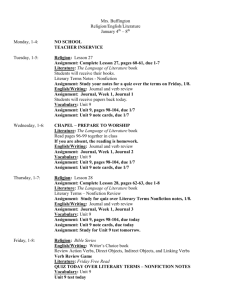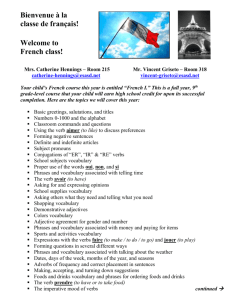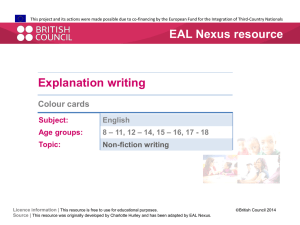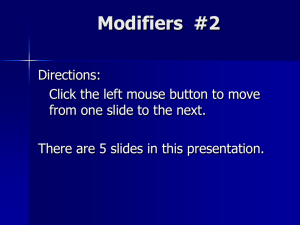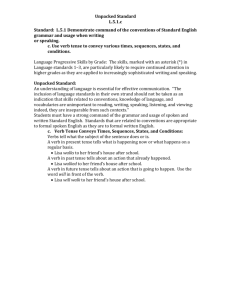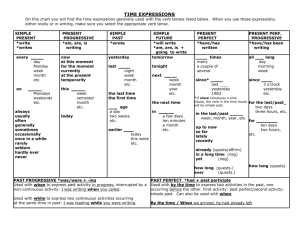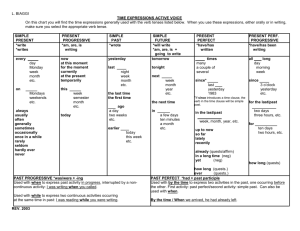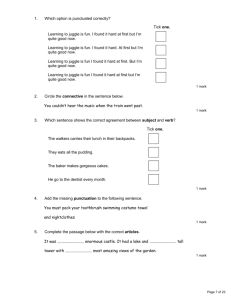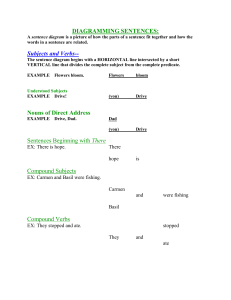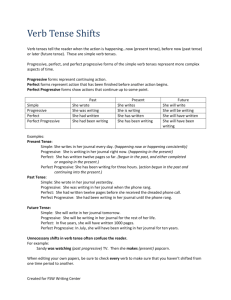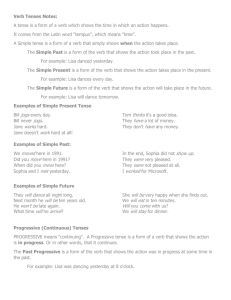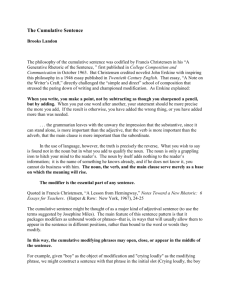Common Core Add-Ons - Henry County Schools
advertisement
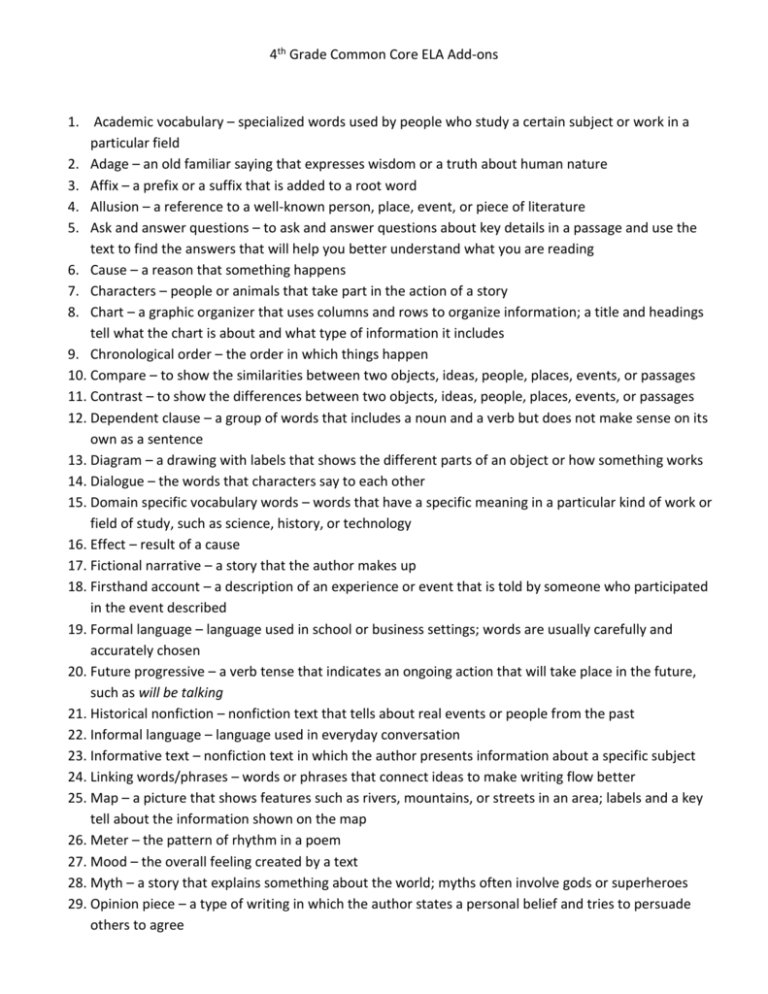
4th Grade Common Core ELA Add-ons 1. Academic vocabulary – specialized words used by people who study a certain subject or work in a particular field 2. Adage – an old familiar saying that expresses wisdom or a truth about human nature 3. Affix – a prefix or a suffix that is added to a root word 4. Allusion – a reference to a well-known person, place, event, or piece of literature 5. Ask and answer questions – to ask and answer questions about key details in a passage and use the text to find the answers that will help you better understand what you are reading 6. Cause – a reason that something happens 7. Characters – people or animals that take part in the action of a story 8. Chart – a graphic organizer that uses columns and rows to organize information; a title and headings tell what the chart is about and what type of information it includes 9. Chronological order – the order in which things happen 10. Compare – to show the similarities between two objects, ideas, people, places, events, or passages 11. Contrast – to show the differences between two objects, ideas, people, places, events, or passages 12. Dependent clause – a group of words that includes a noun and a verb but does not make sense on its own as a sentence 13. Diagram – a drawing with labels that shows the different parts of an object or how something works 14. Dialogue – the words that characters say to each other 15. Domain specific vocabulary words – words that have a specific meaning in a particular kind of work or field of study, such as science, history, or technology 16. Effect – result of a cause 17. Fictional narrative – a story that the author makes up 18. Firsthand account – a description of an experience or event that is told by someone who participated in the event described 19. Formal language – language used in school or business settings; words are usually carefully and accurately chosen 20. Future progressive – a verb tense that indicates an ongoing action that will take place in the future, such as will be talking 21. Historical nonfiction – nonfiction text that tells about real events or people from the past 22. Informal language – language used in everyday conversation 23. Informative text – nonfiction text in which the author presents information about a specific subject 24. Linking words/phrases – words or phrases that connect ideas to make writing flow better 25. Map – a picture that shows features such as rivers, mountains, or streets in an area; labels and a key tell about the information shown on the map 26. Meter – the pattern of rhythm in a poem 27. Mood – the overall feeling created by a text 28. Myth – a story that explains something about the world; myths often involve gods or superheroes 29. Opinion piece – a type of writing in which the author states a personal belief and tries to persuade others to agree 30. Past progressive – a verb tense that indicates a past action that was happening while another action was taking place, such as was talking 31. Personal narrative – a type of writing in which the author describes a personal experience 32. Precise language – words or phrases that are clear and exact 33. Present progressive – a verb tense that indicates an ongoing action in the present such as am talking 34. Problem and solution – a text organization in which the information describes a problem and then discusses a solution or solutions 35. Progressive verb – a verb form used to express and ongoing action that doesn’t have a specific end time 36. Prose – a form of writing in which one sentence follows another, with sentences arranged in groups called paragraphs 37. Proverb – an old familiar saying that expresses wisdom or gives advice 38. Relative adverb – an adverb that introduces a relative clause, such as when, where and why 39. Relative clause – a group of words that tells more about a noun 40. Relative pronoun – a pronoun that is used in a relative clause, such as which, that, who, whom and whose 41. Rhyme – a sound device in which words end with the same sound; rhyme is often used in poetry 42. Rhythm – the beat, or pattern of sounds, in a poem 43. Run-on – one or more sentences run together without proper punctuation 44. Science vocabulary – words that a scientific meaning in a particular area of scientific study 45. Scientific nonfiction – nonfiction text that provides factual information and explains scientific events, procedures, ideas, or concepts 46. Secondhand account – a description of an experience or event told by someone who did not directly participate in the events 47. Sensory language – words that appeal to the five senses; hearing, sight, smell, taste, and touch 48. Sequence of events – the order in which events in text happen 49. Short story – a made-up tale with characters, a setting, and a plot that is usually short enough to read in one sitting 50. Stage directions – the words in a drama that tell actors what to do instead of what to say 51. Summarize – to restate what the most important ideas or information in a passage in your own words 52. Supporting reasons – the details that support an opinion 53. Technical texts – informative texts that explain events, procedures, ideas, or concepts; these texts explain what happens, why something happens, or how something works 54. Text features – items such as time lines, graphs, and captions that support the ideas stated in an informative text 55. Theme – the message about life or people that the author wants the reader to understand 56. Time line – a graphic that shows the dates when important things happened in a certain time period 57. Transitional words/phrases – words or phrases that connect ideas to make writing flow better

